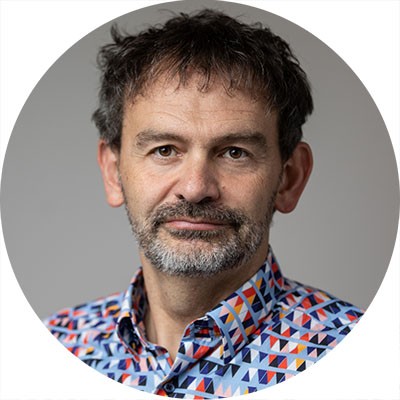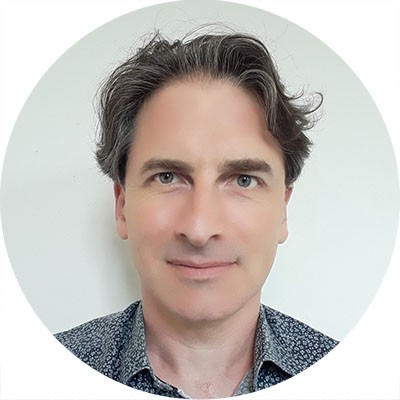A scientific conference on fiction
 The multidisciplinary symposium was held in September 2024 at the École polytechnique.
The multidisciplinary symposium was held in September 2024 at the École polytechnique.
What do competitive equilibrium in economics, elementary particles in physics and the limits of life in biology have in common? They are all, or have been at some point in history, considered to be fiction.
This concept could be rediscovered at the "Science and Fiction" symposium, held on 26 and 27 September 2024 at the École polytechnique. Organised by Nicolas Wanlin and Ismaël Moya of L’X Interdisciplinary Laboratory (LINX*), the event brought together experts from a variety of disciplines to explore the links between science and fiction, offering a unique perspective on the use of fiction as a scientific tool.
Fiction is used to disseminate science through literature, film and video games. But far from being confined to this role, it is also useful for understanding and acting on reality. The conference highlighted fiction as a method of scientific investigation. The presentations highlighted how hypothesis, simulation, modelling and thought experiments can overcome the limits of direct observation and open new avenues of research.

Raphaël Granier de Cassagnac, CNRS research director at Leprince-Ringuet laboratory for particle physics and astrophysics (LLR*) and holder of the "Science and Video Games" Chair, also author of science fiction and the video game Exographer, explored the use of fiction in video games to teach particle physics. He explains this in his talk:
“In particle physics, there is a back-and-forth between experiments in which new particles are observed and theories that predict them in order to solve conceptual problems. In this process, fiction has its say. Imagination plays a crucial role, and some particles remain in the realm of fiction until they have been observed. The Higgs boson, for example, has lived for 50 years in fiction.”
The communication presented at the conference covered a wide range of disciplines, each shedding a unique light on the role of fiction. The École polytechnique's interdisciplinary research teams were well represented. Among them, Frédéric Brechenmacher, Professor of History of Science at LINX*, addressed the concept of 'mathematical fiction'. Erwan Le Pennec, professor of applied mathematics and researcher at the Center for Applied Mathematics (CMAP*), discussed the fictional nature of mathematical models. Olivier Gossner, Professor in the Department of Economics and Director of Research at Center for Research in Economics and Statistics (CREST*), used the prisoner's dilemma to illustrate game theory concepts applied to global challenges such as climate change.

Two presentations dealt with prehistory.
Jean-Louis Mergny, INSERM research director at the Optics and Biosciences Laboratory (LOB*), explored the links between biology and fiction, particularly in palaeogenomics, which involves the study of ancient DNA. In particular, he discussed the gender and species biases in representations of Neanderthal and Sapiens and shared the recent scientific advances that have helped to rehabilitate Neanderthal.

Marie-Paule Cani, professor of computer science and researcher at the Computer Science Laboratory of the École Polytechnique (LIX*), presented how computer graphics can help to "go back in time" in archaeology. In particular, she presented a research project in collaboration with geologists and prehistory specialists to digitally reconstruct the history of the Tautavel cave. This work has made it possible to immerse oneself in 3D in the data and hypotheses of the prehistorians in order to verify their coherence, to use AI to simulate the settlement and approach of hominids and will undoubtedly make it possible to solve enigmas such as the astonishing number of reindeer carcasses found in one of the layers of the cave floor. The research team has also simulated erosion (particularly river erosion) backwards to recreate the terrain as it was at the time, a result validated by the traces of the ancient riverbed found by the geologists.
The humanities and social sciences were also represented by an anthropologist, a sociologist, a specialist in geopolitics and war studies, a historian and several philosophers, each of whom showed how fiction was at work in their own discipline.
Among them was the historian Bruno Dumézil (Sorbonne University/École polytechnique), who reminded us that in the Middle Ages, the historical truth of accounts of origins was not considered an essential criterion, the important thing being to have a reference past for contemporaries. Amélie Ferey (IFRI/École polytechnique), for her part, explained the extent to which wargame fictions can be useful for training military personnel in strategic decision-making.
In conclusion, this event demonstrated that fiction, far from being opposed to science, is often an essential tool, highlighting an intellectual approach common to very different areas of research and innovation.

"What defines fiction is an assumed and asserted distance from reality or observation. Fiction is, among other things, a technique for understanding or acting on reality by ostensibly breaking with it", explain the conference organisers, Ismaël Moya and Nicolas Wanlin, professors at X and researchers at the LINX.

*LINX, a laboratory of École Polytechnique, Institut Polytechnique de Paris, 91120 Palaiseau, France
LLR: a joint research unit CNRS, École Polytechnique, Institut Polytechnique de Paris, 91120 Palaiseau, France
LOB: a joint research unit CNRS, Inserm, École Polytechnique, Institut Polytechnique de Paris, 91120 Palaiseau, France
LIX: a joint research unit CNRS, École Polytechnique, Institut Polytechnique de Paris, 91120 Palaiseau, France
CMAP: a joint research unit CNRS, Inria, École Polytechnique, Institut Polytechnique de Paris, 91120 Palaiseau, France
CREST: a joint research unit CNRS, École Polytechnique, GENES, Institut Polytechnique de Paris, 91120 Palaiseau, France
 Support l'X
Support l'X 








